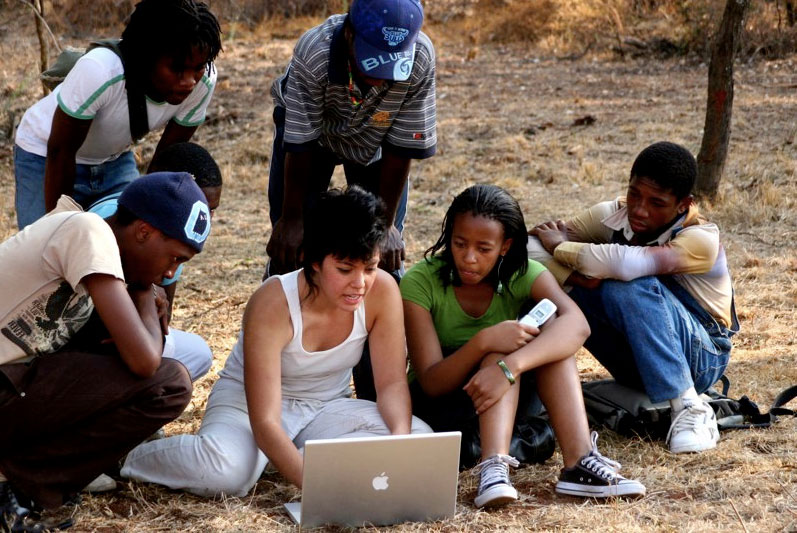Emerging ICT4D Trends at the SBCC Summit
Information communication technology (ICT) and social and behavior change communication (SBCC) are inextricably linked. When considering ICTs, most people think of devices such as mobile phones and computers, however radio and television are also examples of ICTs and have played a huge role in SBCC programs over time and around the world.

Photo by Marina McClure, Flickr
As costs drop and networks expand, newer ICTs are becoming increasingly accessible and more widely used, making them an efficient and effective tool for reaching priority audiences in SBCC programs. Therefore it is not surprising to see the number of presentations and posters at the upcoming SBCC Summit that will focus on ICTs. The speakers and posters span a variety of tools being used for diverse objectives, from SMS-based polling during the Ebola crisis in Liberia to digital storytelling to engage youth with family planning topics in Ghana. In the diversity of ICT-based work that will be featured at the SBCC Summit there are a few general themes that reflect broader trends in ICT for SBCC.
- ICT-based SBCC activities focused on young people or front-line health workers (FLHWs) – With young people being early adopters of new technology and many youth growing up being plugged in to devices, networks and tools, youth are a natural choice of an audience for ICT-based interventions. In addition, there are an increasing number of ICT-based activities directed at FLHWs and providing them with tools and resources to aid and improve their work. As access to and use of ICTs becomes more widespread, it will be beneficial to learn from the achievements and challenges of the activities targeting these specific audiences and apply them to activities focused on other audiences.
- Integration of ICT activities with other channels – One common misconception is that mobile health (mHealth) means developing an app or complicated system. In reality, mHealth can be as simple as complementing community health worker visits with SMS appointment reminders, or using social media to engage with listeners of a radio program. With the countless ICT tools and resources that are already developed and are easy to adapt and use, along with the many examples of ICTs effectively complementing non-ICT channels in SBCC programs, it is simpler than ever to include ICTs in the channel mix of SBCC programs.
- ICTs for M&E – Measuring and proving the impact of SBCC programs has long been a challenge. As ICTs are making it possible to collect more and better quality data using less resources, monitoring and evaluation (M&E) activities are increasingly relying on ICTs. At a recent conference on this specific topic, one key recommendation was that we all need to do a better job of actually learning from lessons learned, and the SBCC Summit provides a wonderful opportunity for doing so.
While there are many positive trends in ICT for SBCC, there are also many challenges, one of the largest of which is pilotitis. So for those attending or following the SBCC Summit, it is great to be excited about the plethora of ICT-related presentations and posters, it is also important to ask critical questions about those challenges such as scale and sustainability. By learning from each other we can advance the larger trend of SBCC programs adapting to the changing information-seeking and communication behaviors to meet people where they are, using the ICT channels that they are already using in their daily lives.
Find a complete list of ICT-focused sessions here, and be sure to follow Summit updates via #SBCCSummit on Twitter and Facebook.








Leave a Reply
Want to join the discussion?Feel free to contribute!